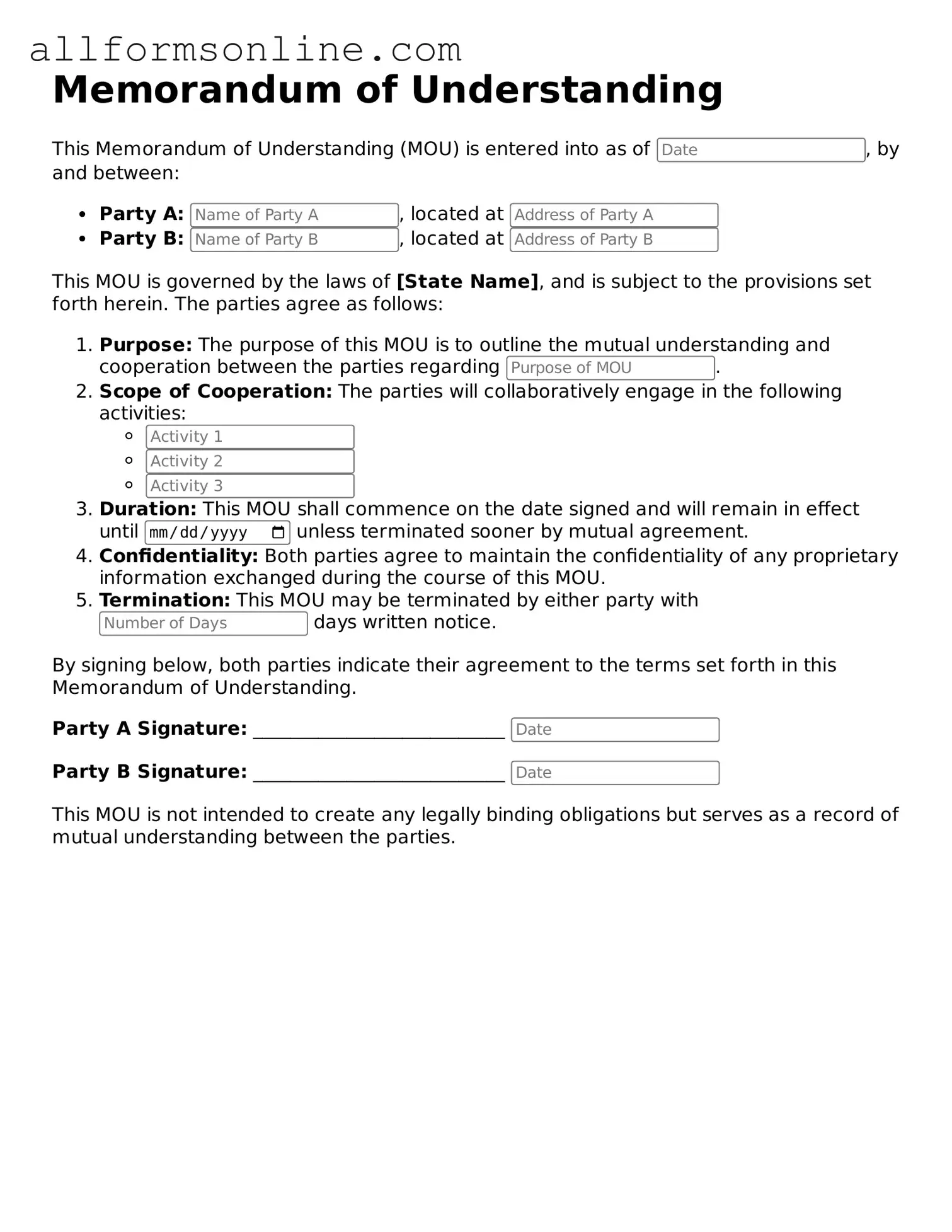What is a Memorandum of Understanding (MOU)?
A Memorandum of Understanding is a formal agreement between two or more parties that outlines their intentions and the terms of their cooperation. It serves as a framework for collaboration and can address various aspects of a partnership, including goals, responsibilities, and resources. While an MOU is not legally binding, it reflects the parties' commitment to work together towards a common objective.
When should an MOU be used?
An MOU is typically used when parties want to establish a mutual understanding before entering into a more formal agreement. It can be beneficial in situations where collaboration is needed but the details of a contract are not yet finalized. Common scenarios include partnerships between organizations, joint ventures, or agreements between governmental entities.
What are the key components of an MOU?
An effective MOU usually includes several key components. These may encompass the purpose of the agreement, the roles and responsibilities of each party, the duration of the partnership, and any financial or resource commitments. Additionally, it may outline how disputes will be resolved and the process for making amendments to the MOU. Clarity in these areas helps prevent misunderstandings in the future.
Is an MOU legally binding?
Generally, an MOU is not considered a legally binding contract. It primarily serves as a document that expresses the intentions of the parties involved. However, certain elements within an MOU could potentially be enforceable if they reflect a clear agreement on specific terms. It is important for parties to understand the implications of the language used in the MOU.
How can an MOU be modified or terminated?
To modify or terminate an MOU, the parties typically need to follow the procedures outlined within the document itself. This may involve written consent from all parties or a specific process for making changes. It is advisable to document any modifications in writing to maintain clarity and avoid future disputes.
What should be done after signing an MOU?
After signing an MOU, the parties should ensure that they adhere to the agreed-upon terms and responsibilities. Regular communication is important to monitor progress and address any issues that may arise. Additionally, it may be beneficial to schedule periodic reviews to assess the effectiveness of the partnership and make any necessary adjustments.
